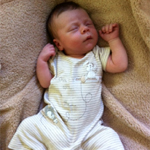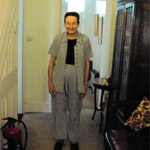Sciatica – signs, symptoms and saying ‘sayonara’
When you were growing up, how many times did you hear an older relative complaining about their lumbago? That their left hip hurt or that they could only stand on one leg? Often confused with other types of back pain, lumbago has since received a makeover – it’s now called Sciatica – but everything else about this common condition remains the same. It’s irritating, disruptive, painful and potentially extremely debilitating. Oh, and it’s not confined to the elderly, either!
Sciatica and its causes explained
The sciatic nerve is the largest and longest nerve in the human body. It runs all the way from the lower back (lumbar region), through the buttocks and down both legs to the feet. Sciatica is the pain that occurs when the nerve is injured or compressed, often at the base of the spine, and usually causing pain in one side of the body. It’s important to remember, too, that Sciatica is the symptom, not the cause, which is frequently one of the following:
- A herniated disc: Positioned between the vertebrae (bones in the spinal column) discs act as shock absorbers or cushions. Over time (often thanks to poor posture or overload) their hard outer structure can develop tiny tears, allowing their jelly-like inner core to ‘leak’ or herniate, irritating the sciatic nerve.
- Degenerative Spinal Arthritis. Osteoarthritis in the spine can damage the cartilage (connective tissue) on the joints and discs in the neck and lower back, producing spurs of bone that press against the sciatic nerve.
- Poor posture: Sitting incorrectly with more weight on one hip than the other can irritate or compress the sciatic nerve.
Symptoms of Sciatica:
- Stabbing, burning or shooting pain along the sciatic nerve:
- In your lower back. hip and/or buttock(s)
- In the back of your thigh and down the leg
- In your feet and/or toes
- In the genital area
- Aggravated by prolonged sitting, standing or walking, coughing or sneezing
- Burning or tingling (pins and needles) in the legs and/or feet
- Numbness and weakness in affected areas
Diagnosis and treatment
Sciatica often improves on its own after four to six weeks and it’s important not to let it interfere with your daily activities. You can help yourself by:
- Keep moving and avoid prolonged sitting
- Use heat packs on painful areas
Osteopathy can also provide real relief. I normally take a case history and examine the affected areas – your hips, back and legs – to test for strength, flexibility, sensation, and reflexes. I may also have to refer you for further tests, such as an MRI scan to check for disc injury. Osteopathic treatment for sciatica focuses on relieving pressure on the sciatic nerve by mechanically realigning the spine.
I may give you exercises and stretches to help alleviate symptoms and strengthen the body, as well as advice on posture and how to prevent recurrences.
So, if you’re got pain, numbness or tingling in your lower back, buttocks and/or legs, you may have Sciatica. Please get in touch to see how I can help you.
And, in case you’re wondering, ‘Sayonara’ is Japanese for ‘goodbye’!





















